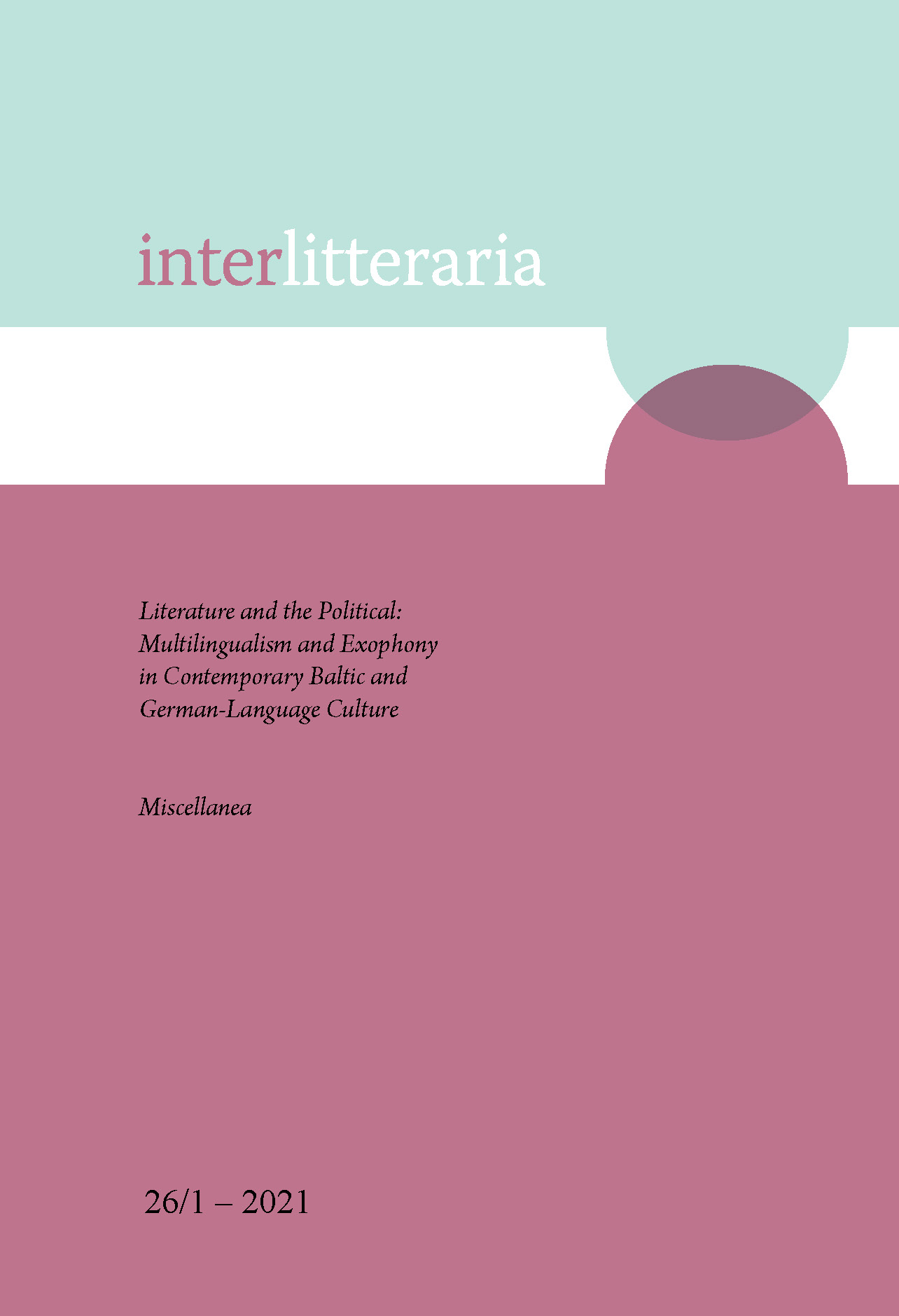Verflochtene Sprachen und Kulturen: Gohar Markosjan-Käspers Romane als Beispiele des mehrsprachigen Schreibens
DOI:
https://doi.org/10.12697/IL.2021.26.1.8Keywords:
Gohar Markosjan-Käsper, multilingualism, transcultural literature, Estonian literature, Armenian literature, Soviet Union, language politics, cultural politicsAbstract
Intertwined Languages and Cultures: Gohar Markosjan-Käsper’s Novels as Examples of Multilingual Writing. The present article analyses the phenomenon of multilingualism in the novels of Gohar Markosjan-Käsper (1949–2015) and discusses her life and work in the socio-political context of the former Soviet Union (in relation to language and cultural politics). Markosjan-Käsper was an Armenian-born writer who spent most of her life in Estonia and wrote her books in Russian. Accordingly, her works originated in a contact zone of different languages and cultures. This article highlights her novels Helena and Penelopa as examples of transcultural writing and analyses the manifestations and functions of multilingualism in these works. The study shows that a number of topics and motifs that are present in German-language transcultural literature also appear in Markosjan-Käsper’s novels (for example cultural comparison, self-discovery in a foreign culture). The multilingualism can be seen in these novels both explicitly and implicitly: in addition to Russian, other languages such as Armenian, Estonian, English, and Latin are used, with numerous indirect references to these languages. Furthermore, various references to world-famous novels such as Ulysses by James Joyce and Master and Margarita by Michail Bulgakov are analysed.
Downloads
Downloads
Published
Issue
Section
License
The contents of Interlitteraria are published under CC BY-NC-ND licence.


